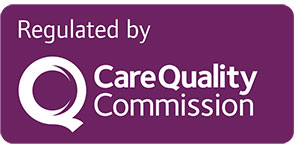Allergic rhinitis, or hay fever, is a common condition caused by an allergic reaction to environmental triggers like pollen, dust mites, or pet dander. It leads to symptoms such as sneezing, nasal congestion, and itchy eyes. Here, we cover its causes, diagnosis, and treatment options. Dr Alan Twomey, one of our Teladoc Health virtual GP’s, explains more in this article.
What Causes Allergic Rhinitis?
The primary cause of allergic rhinitis is pollen, particularly from grasses, which accounts for 90% of cases. House dust mites and pet dander are also common allergens.
Allergic rhinitis develops in three stages:
- Exposure to the allergen.
- Sensitisation – the immune system becomes primed to react.
- Allergy – symptoms occur on subsequent exposure.
Interestingly, people may remain sensitised without showing symptoms. Only after a shift in the immune response do symptoms like sneezing and congestion emerge.
How Is Allergic Rhinitis Diagnosed?
Most people are diagnosed because of their symptoms but if we need to find which allergens are causing the symptoms, the most reliable investigation is skin-prick testing, which identifies specific allergens. IgE blood tests can also be used but are less reliable and may give false positives.
Treatment Options
Management typically follows a step-by-step approach:
- Check technique: Ensure correct use of nasal sprays and drops.
- Intranasal steroids (INS) and oral antihistamines (AH) are first-line treatments for moderate to severe symptoms.
- Dymista: A combination spray for quicker relief.
- Saline irrigation: Helps clear nasal passages.
- Decongestants: Short-term use for severe congestion (up to 7 days).
- Azelastine or Rhinatec for persistent symptoms like itching or watery rhinorrhoea.
- Montelukast: Consider if asthma symptoms are present.
Key Medications
- Saline Nasal Sprays: Help with clearing allergens and improving other treatments although the effect can be modest.
- Intranasal Corticosteroids: Effective for most symptoms; take 6–8 hours to work, with full effects in 2 weeks.
- Antihistamines: Most effective when used regularly, ideally a week before allergy season begins. Cetirizine (10mg) is preferred over older antihistamines like Piriton.
- Dymista: Combines an antihistamine and a steroid for faster relief.
- Azelastine: Works quickly but may have a bitter taste.
- Montelukast: Can be trialled if other treatments are working well enough.
Immunotherapy for Long-Term Relief
If symptoms are persistent, immunotherapy can help. This involves gradually increasing exposure to allergens, either through sublingual (under the tongue) tablets (e.g., Grazax for grass pollen) or subcutaneous injections. This treatment can provide long-term symptom relief but may require several months to see results.
Lifestyle Changes to Reduce Allergens
- Pollen: Avoid outdoor activities when pollen counts are high, typically in the morning and evening.
- Dust Mites: Use allergen-proof bedding, wash linens at high temperatures, and reduce fabric in the bedroom.
Managing Allergic Conjunctivitis
Allergic conjunctivitis can occur alongside rhinitis, causing red, itchy, swollen eyes. Treatment options include antihistamine eye drops (e.g., Azelastine, Olopatadine) and avoiding contact lenses.
Final Thoughts
Managing allergic rhinitis involves a combination of medication, allergen avoidance, and lifestyle changes. If symptoms persist or significantly affect your quality of life, speak with Teladoc Health UK’s Virtual GP service about medication changes and advanced treatments like immunotherapy. For more tips on managing hay fever, visit Allergy UK or use the Met Office Pollen App for pollen alerts. By following the right approach, you can gain better control over your allergies and improve your daily life.










